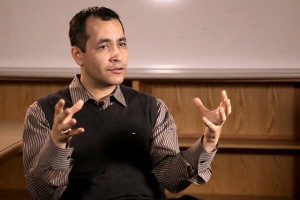Alcoholism
Neuroscientist John Krystal on alcohol's action on the brain, social and habitual drinking, and why some peopl...
What are the methods currently used for monitoring parametres in the brain? Which problems are still present on the way to introduce nonivasive methods into practice? Assistant Professor of Electrical and Biomedical Engineering at Massachusetts Institute of Technology Thomas Heldt speaks on how noninvasive monitoring of intracranial pressure will transform taking care of patients with brain injuries.
The way that intracranial pressure is currently being monitored is that a neurosurgeon will drill a hole into your skull and advance a catheter through your brain tissue into one of the ventricular spaces which are essentially at the center of your brain or close to the center of your brain. And then measure the fluid pressure that exists in that space. Drilling a hole into the skull obviously is that incredibly invasive procedure and would only be done in patients who are very, very sick. Although the measurement of intracranial pressure might actually benefit much larger patient pool than just those with, for example, severe traumatic brain injury or hemorrhagic stroke or brain tumor.
By knowing the actual number of intracranial pressure you could start administering therapy at the ambulance, for example, or, you know, at the site of injury. And you wouldn’t have to wait for neurosurgeon to be available to actually place the invasive catheter and make the measurement available to you. It would allow long-term monitoring without the risk of infection or risk to vital brain structures that are currently inherent to the direct measurement of intracranial pressure. And therefore it could actually expand the patient pool significantly.
There is currently a number of promising technologies under investigation that indicate to us that we can actually get at intracranial pressure noninvasively. In order to translate from a research project that has promise to a product or a clinical tool we have to be able to demonstrate that we can estimate intracranial pressure noninvasively with the same kind of accuracy and precision that allows clinicians to make clinical decisions with reasonable confidence.

Neuroscientist John Krystal on alcohol's action on the brain, social and habitual drinking, and why some peopl...

Bioengineer Ali Khademhosseini on creating new biomaterials, microengineering, and mimicking embryonic develop...

A patient was implanted 3D-printed artificial ribs made of titanium